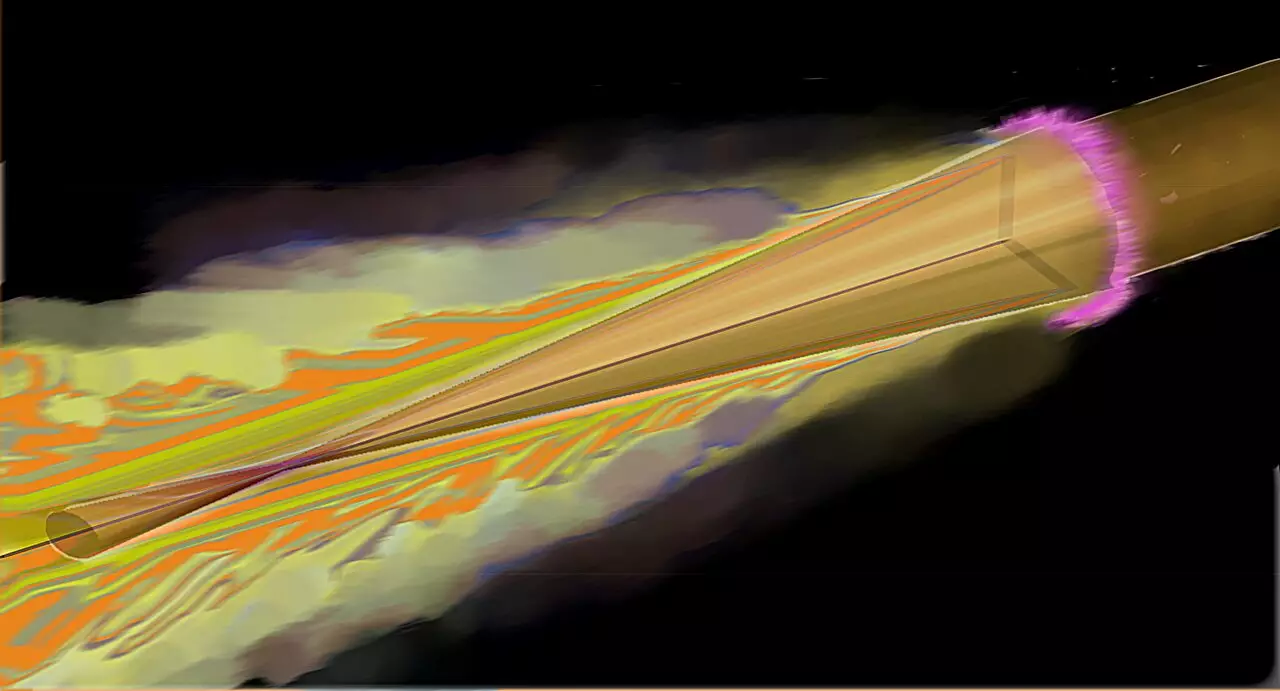The universe is an extraordinary arena, where stars and planets exist under conditions that are nothing short of extreme. Within these celestial bodies, pressures soar to millions of bars, and temperatures can reach several million degrees Celsius. Understanding the properties of matter under such conditions is crucial not only for astrophysics but also for material science and fusion research. Traditionally, scientists have relied on colossal facilities like the National Ignition Facility (NIF) in California to recreate these environments. However, the advent of innovative technology by the Helmholtz-Zentrum Dresden-Rossendorf (HZDR) and the European XFEL heralds a new era in this field, promising more accessible and versatile experimental opportunities.
The groundbreaking technology revolves around a remarkably fine copper wire, which is thinner than a human hair. This development is particularly noteworthy as it allows for the experimentation of extreme conditions using a laser significantly smaller than those found in existing high-energy laboratories. The research team has successfully created high-pressure and high-temperature states, mimicking the conditions inside stars and other cosmic entities, but without the need for the large-scale infrastructure typically associated with such experiments.
The traditional approach involved bombarding a material specimen, usually a thin foil, with high-energy laser pulses. This struck wave induces a rapid heating of the material’s surface, generating a shock wave that propagates through the sample, leading to conditions that are temporally fleeting but nonetheless insightful. Utilizing the sophisticated ultra-strong X-ray pulses from the European XFEL, researchers can now capture these rare moments with unprecedented clarity.
At the core of this innovative study is the collaboration between various institutions that have developed a laser capable of producing incredibly short yet powerful pulses. The HED-HIBEF experimental station operates with laser pulses of approximately one joule but possesses an astonishing peak output of 100 terawatts due to their duration of just 30 femtoseconds. This delicate balance of energy and timing allows researchers to shatter conventional boundaries in their microscopy of extreme conditions.
The research team utilized these short laser pulses on the ultra-thin copper wire, enabling real-time observation of the phenomenon as it unfolds. As Dr. Alejandro Laso Garcia, the lead author, elaborates, this combination of short-pulse laser technology with high-energy X-ray observation has yielded surprising results. The system not only creates a shock wave that travels through the wire but also generates high-energy electrons that move along its surface and create dissipative phenomena.
In a series of systematic measurements, the researchers varied the time between laser impact and X-ray observation. This temporal flexibility allowed them to construct a detailed “X-ray film” of the event, capturing the unfolding dynamics within the wire. Initially, a shock wave generated from the laser pulse detonates through the copper, leading to the material’s eventual destruction; however, before this occurs, fast-moving high-energy electrons generate further shock waves, converging at the wire’s center and resulting in extreme conditions.
The analyses conducted by the research team revealed that the density of the copper could reach an astonishing eight to nine times that of normal conditions. As Prof. Thomas Cowan from HZDR noted, they reached a pressure of 800 megabars—an indescribably high pressure that is well beyond what we experience on Earth. The resultant temperatures too, surpassing 100,000 degrees Celsius, closely resemble the conditions found in the corona of white dwarf stars, opening new avenues for exploring exotic states of matter.
This groundbreaking technique could revolutionize the exploration of materials under extreme states, not only for celestial studies but also for practical applications such as fusion energy research. The striking achievements demonstrated by the HZDR consortium expand our ability to manipulate and observe the intricate behaviors of different materials. For instance, the team’s future focus includes exploring wires made of iron and plastic—both of which play significant roles in astrophysics.
Moreover, as the research continues to develop, there is hope that the same technique could be leveraged in the pursuit of sustainable fusion energy. Many research entities are working towards achieving net-positive energy from fusion reactions, and the refined observational methods demonstrated by this study could provide vital data about the processes within fuel capsules.
The innovative approach employed by the HZDR and the European XFEL represents a monumental step forward in the understanding of extreme states of matter. By circumventing the limitations of traditional high-energy facilities, this research not only enhances our understanding of the cosmos but also paves the way for advancements in materials science and energy generation. As we forge ahead, the insights gained from this research will undoubtedly contribute to unraveling the mysteries of our universe and transforming energy production methodologies for the future.


Leave a Reply